UPDATE (8/3/10): Added some outdoor shots to the samples. The lens shows very little flare, even with the sun in the scene.
I waited a long time to get my hands on the Canon EF 24mm f/1.4L II lens. Back in december 2008, I wrote a small ruby script to help me determine what focal lengths I favored, and concluded that this particular lens would be the perfect match for my EOS 50D, for low-light photography. I still hadn’t managed to turn up the funds for one when The Digital Picture published a glowing review of it a couple of months later, but later that year I gutted my piggy bank, and finally received the lens after waiting in a back-order queue for 5 weeks.
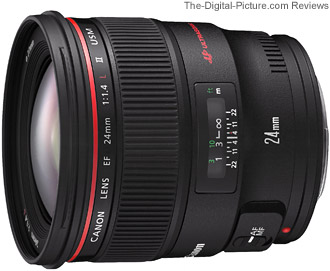
Now, after using the lens for some months, I wanted to share my impressions with you, the internet. I won’t go into nearly as much detail as the DP review, and if you’re interested in this lens I’m sure you’ve already read it (you should), but instead focus on my impressions of using it on a APS-C camera, specifically the EOS 50D, since I haven’t found many reviews covering that aspect.
I don’t own many L-series lenses, and no L-series primes, and before the 24mm II my favourite lens was the fabulous EF-S 17-55mm f/2.8 IS, which I loved for it’s low-light capabilities. Now, my favorite lens on the 50D is the 24mm II, because of it’s outstanding image quality, combined with a 38mm equivalent field of view, and an impressive maximum aperture of f/1.4.
Image quality
I am continually impressed with the image quality of this lens. It’s way better than the 17-55mm f/2.8 IS, which was already good, with wonderfully saturated colors, outstanding sharpness even wide open(!), and negligible chromatic aberration. If you manage to get the focus right, even f/1.4 will be sharp. The photo below is an example of that, though perhaps not a work of art in itself 🙂
Landscape photography is not my area of expertise, but one thing I have noticed, is that the lens controls flare very well, as you can see from the image below, and some of the samples, where the sun is in the scene.
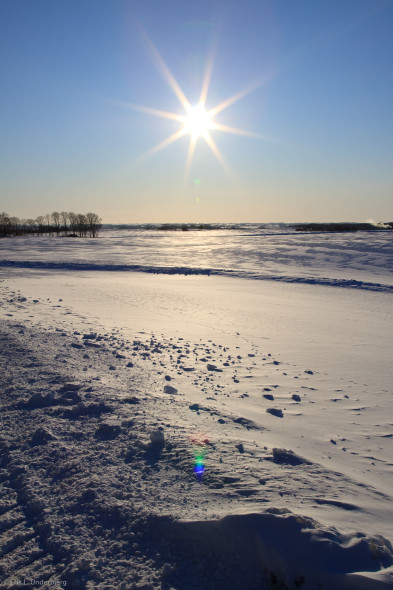
Other reviews will have more details and charts for you, as well as more basis for comparison, so let it suffice to say that the image quality of the 24mm II has impressed me, compared to the other I own, notably the 17-55mm f/2.8 IS, 70-200mm f/4 IS and 50mm f/1.4.
38mm equiv. field of view (on an aps-c camera)
It’s not easy to find fast primes that are wide on an APS-C camera, such as the 50D/40D/500D/7D, and the 50mm f/1.4 has always been a bit too narrow for my style of shooting, as I like to get a lot of context in my shots, and often shoot indoors in close-quarters, which makes 80mm equiv. unpractical.
The field of view (FOV) took a bit of getting used to, and the fact that it is a prime means I’ve been getting more exercise running around, but I absolutely love it. I have to get closer to fill the foreground, but the wide angle can create some very dynamic and engaging compositions, where you really are “in” the scene you’re photographing. It allows me to get a lot of context into the shot, while still separating the foreground from the background, further aided by the low depth of field enabled by the large aperture.
Images taken with the 24mm II up-close and wide-open get a distinct “feel”, which I suppose is because it’s unusual to see images with low depth-of-field taken with a wide lens.
Large f/1.4 aperture
One of the major “features” I was looking for in a fast prime, to supplement my already-excellent-for-low-light-shots 17-55 f/2.8 IS, was a large aperture. I was expecting a marginally more “handholdable” lens, for indoor shots, with much better bokeh.
In my experience, the 24mm II is not significantly more “handholdable”, because although it has a two-stop advantage over the 17-55, the latter sports an image stabilizer which promises 3-stop stabilization. I don’t have any hard statistical data, but my “feeling” is that this pretty much levels the playingfield between these two lenses, at least where stationary objects are concerned. For moving targets, the 24mm II should theoretically have the advantage, since the larger aperture enables faster shutter speeds. However, I do a lot of dance photography, and for this purpose, IQ aside, the 24mm II’s f/1.4 aperture doesn’t really help: It has proven to be extraordinarily difficult to accurately focus on anything moving (such as dancers), with the shallow depth of field at f/1.4. In short, image quality may be better, and f/1.4 may enable faster shutter speeds, but good luck focusing on anything that moves.
If I was slightly disappointed with the 24mm as a replacement for my “dance lens”, which isn’t really a fault of the lens, as much as my own expectations, the bokeh rendered by the 24mm II is a thing of beauty. If you can control it, you will get beautifully smooth out-of-focus backgrounds and foregrounds. It’s addictive 🙂
All-in-all…
…this is a wonderful lens on a APS-C crop camera, such as the 50D. The field of view is approximately equivalent to a 35mm lens on a full-frame camera, and as one of canon’s newest L-lenses, the image quality is unmatched at this focal length. It’s expensive, but I’m inclined to think this is a case of you-get-what-you-pay-for.
I think this focal length is good as a walk-around lens on a crop-camera, and the bokeh combined with the wide FOV, makes for some really unique shots. I have especially loved it for environmental portraits because of the FOV and shallow depth-of-field, as the sample pictures demonstrate.
I hope you’ve found this useful, and feel free to ask questions if there’s anything you feel I’ve left out. I’ll try my best to answer. Enjoy the samples, or check out my images on Flickr tagged with this lens.
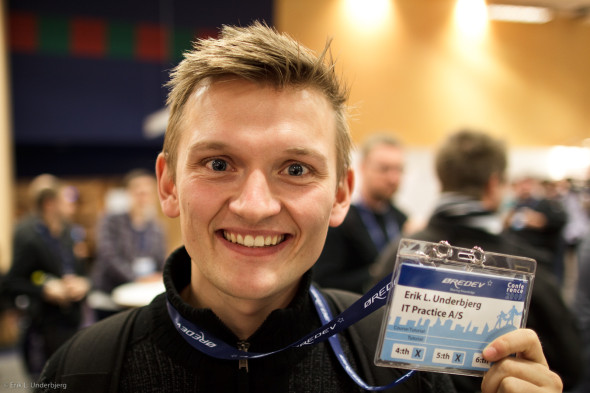
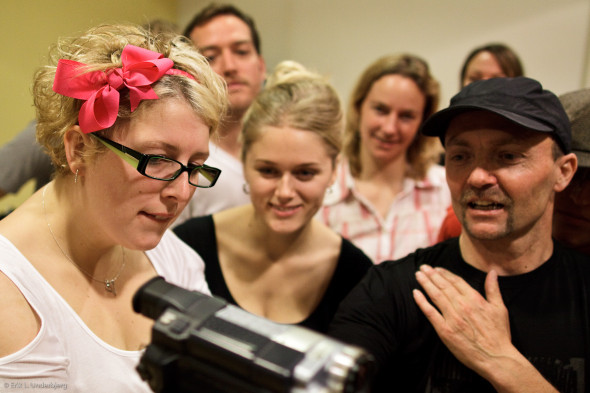
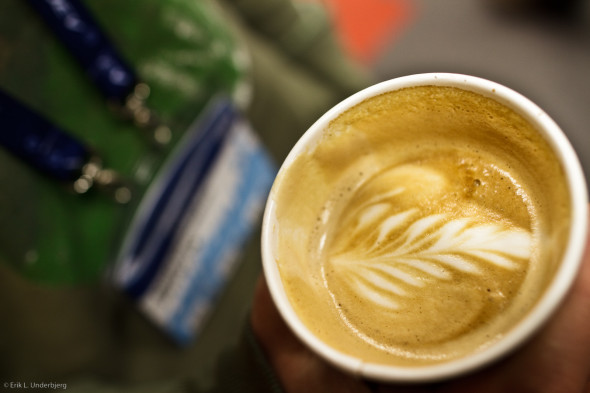



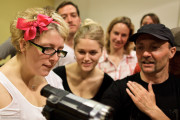



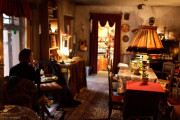

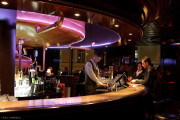
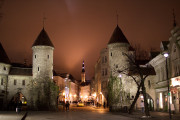



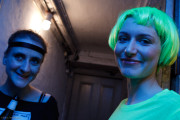

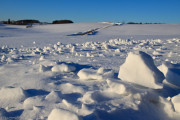
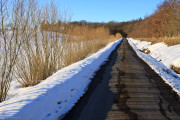
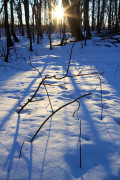
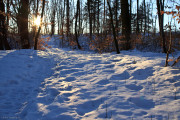
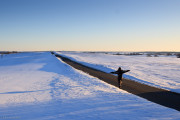
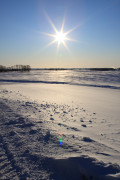
I love this beauty. Posted a few with this on my blog…dowtown austin, tx 6th street.
Finally, a review from someone who was evaluating this lens specifically for a crop body! I, too, have a 50D and a 17-55 as my walkaround (and, so far, best) lens. I have two small kids (ages 5 & 3) that are the subjects in most of my photography. I have been frustrated in trying to get the elusive pop and “wow” of tack-sharp portraits with shallow DOF on the 17-55. An accomplished artistic portrait photographer told me the only way to get there is with a fast L prime. I was torn between the 35L and the 24LII, mainly because I was afraid the 24L might render a perspective a little too extreme and start giving ALL my images the same look and feel. On the other hand, my Nifty Fifty is too long to use in the house all the time, and I didn’t want to find out after spending big money on the 35L that it was still too long for indoor use on a crop body.
I won’t exactly be shooting “dancers,” but I suspect I’ll have the same challenges in shooting kids at f/1.4 as you have with dancers. I’m hoping that the focus challenge will be relieved at f/2, and the images I get at f/2 on the 24L will still be head-and-shoulders above the images I can get with the 17-55 at f/2.8, since the 24L will be stopped down and the 17-55 will be wide open. Obviously the IS comes into play here in favor of the 17-55, but I’m hoping the 24L will still be noticeably better. Given that you’ve had both for a while, what do you think?
My 24L arrives today; the UPS tracking information shows it has arrived locally and will be out for delivery soon 😉
I’m glad you found it useful Dave, and congratulations with your new lens! 🙂
I think many of the challenges in dance and child photography are the same – they just don’t stand still. At f/2 you should get some benefits from a 1-stop shutter speed advantage over f/2.8, and you probably won’t have as much trouble hitting focus as with f/1.4. Still, especially when you’re up close, focusing is going to be tricky with moving subjects, and I suggest you use the 50D’s ability to crank up ISO and hi-speed continuous shooting to improve your chances. IS is not really an advantage here, because it doesn’t help with subject movement.
I use my 24mm mostly between 1.4 and 2.8, and I love it. The images somehow looks a lot better than with my 17-55, and I definitely don’t think the perspective is too extreme.
I think you’re going to love this little prime on your 50D. I keep mine on the camera most of the time, and only switch to the 17-55 if I need the ability to zoom.
Have fun!
Hi Erik, Thanks for your review. I am also a 50D owner and planning to buy a 24LII. Your review, with the sample pictures, was just what I needed.
Great review and I also appreciate it in regards to a crop body. I have a 60D and I am considering this lens. I’m most interested in using it for pictures of a newborn baby. I think my 50mm would be too long for use in a hospital room. Do you think the 24mm would be useful in that setting? Have you noticed any typical wide angle issues with it?
I am using it on a 7D, and it’s awesome!
Thank you so much for this review! I have look everywhere online for information about the 24mm on my 50d camera but have been unable to find anything about it. I was debating between the 24mm and the 35mm but now I am pretty confident that the 24mm is the right choice.
Thanks again!
Thanks for this review, have been researching and I like the idea of the 24 on a crop.
On my 7D I loved the sigma 30 but I always wanted it to be a bit wider. I found my 10-20 to be too wide, even at 20mm. So I have been thinking of the 24L to replace both, and I think I have finally made up my mind.
Eric, this is an excellent review. based on it i purchased the lens. i own 7D and paired it with 17-55 2.8
it took quite a bit to get use to this lens. Somtimes the day time images are just too bright. Any advice? Night time (no flash) images are excellent. particularly the still ones.
What mode do you usually use with this lens on your 50D?
While I found the colour and contrast on the lens to be as good as I had ever seen, I wasn t using it to the fullest of it s abilities; namely the widest aperture available on a Canon wide-angle lens.